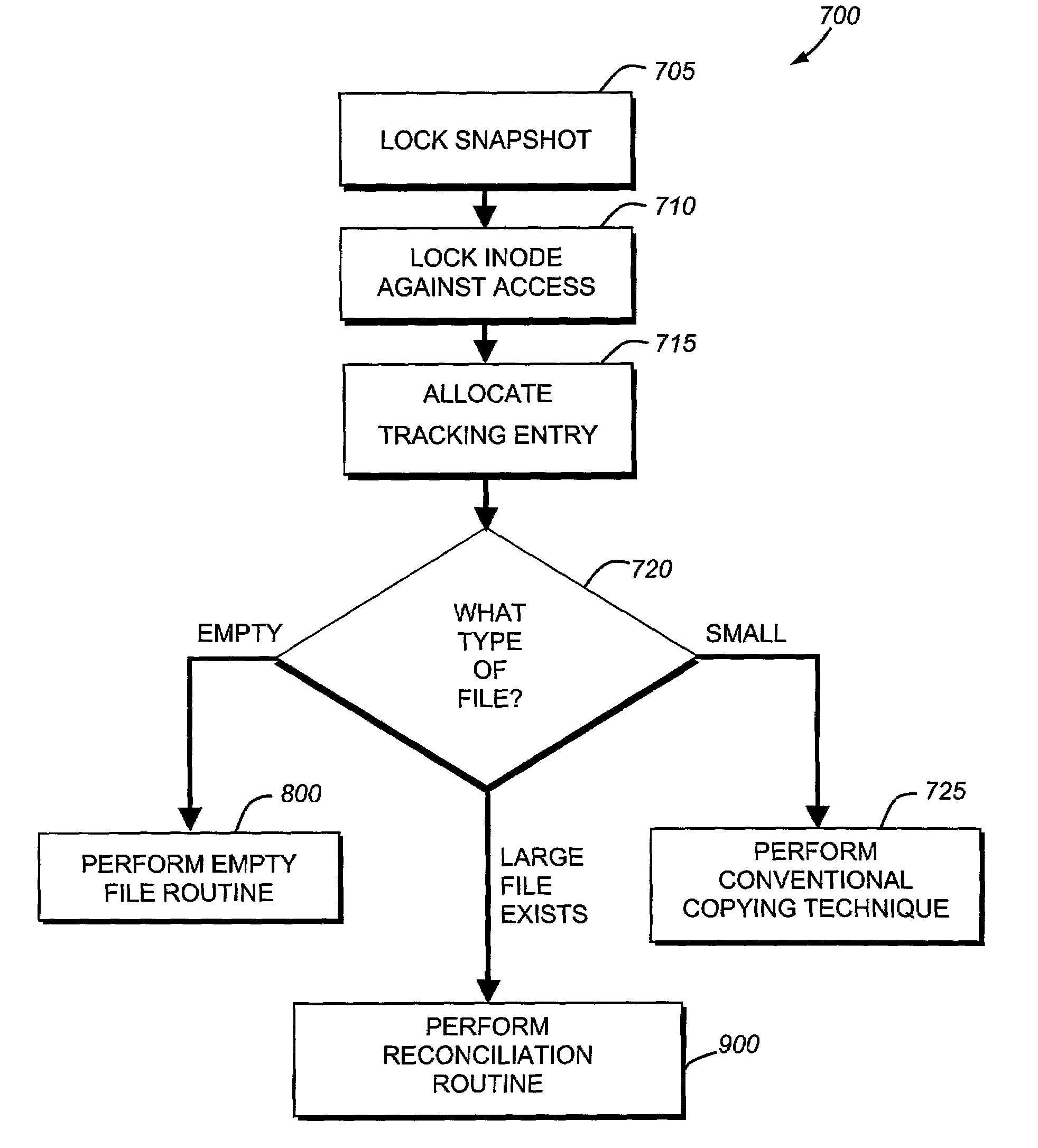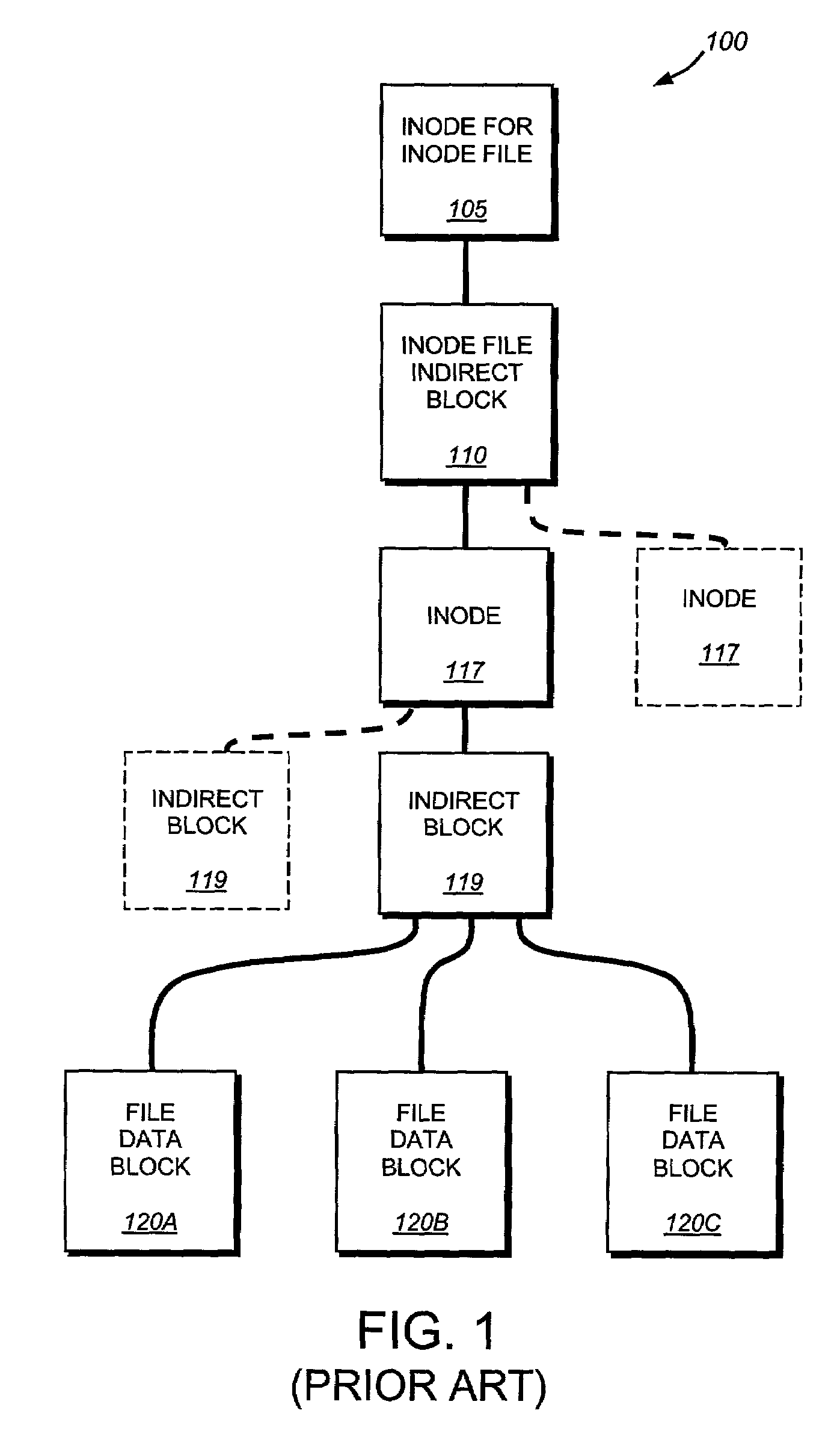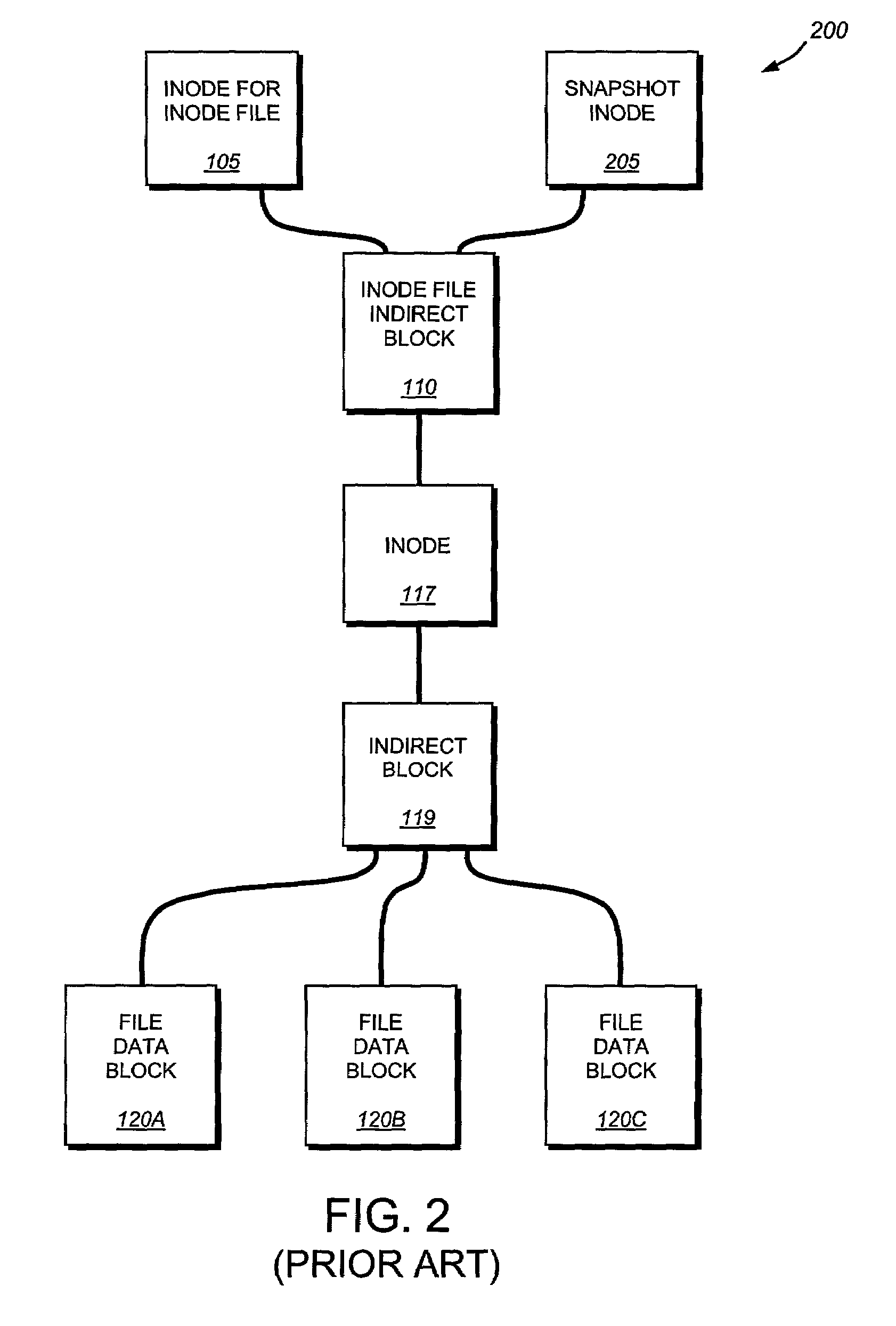System and method for restoring a single file from a snapshot
a snapshot and file technology, applied in the field of data backup and restoral, can solve the problems of requiring a substantial amount of time and processing power, unable the volume may not be of sufficient size to accommodate two full copies of the database file, so as to achieve the effect of restoring a file quickly, substantial storage space, and saving processing overhead and tim
- Summary
- Abstract
- Description
- Claims
- Application Information
AI Technical Summary
Benefits of technology
Problems solved by technology
Method used
Image
Examples
Embodiment Construction
[0032]A. Network Environment
[0033]FIG. 4 is a schematic block diagram of an exemplary network environment 400 in which the principles of the present invention are implemented. The environment 400 is based around a network cloud 402. This network cloud can be a local or network (LAN), a wide area network (WAN), virtual private network (VPN) utilizing communication links over the internet, for example, or a combination of LAN, WAN and VPN implementations can be established. For the purposes of this description, the term network cloud should taken broadly to include any acceptable network architecture. The network cloud 402 interconnects various clients 404. Also attached to the network cloud is a file server 500. This file server, described further below, is configured to control storage of, and access to, data and a set 408 of interconnected storage volumes 406. Each of the devices attached to the network cloud include an appropriate conventional network interface arrangement (not sh...
PUM
 Login to View More
Login to View More Abstract
Description
Claims
Application Information
 Login to View More
Login to View More - R&D
- Intellectual Property
- Life Sciences
- Materials
- Tech Scout
- Unparalleled Data Quality
- Higher Quality Content
- 60% Fewer Hallucinations
Browse by: Latest US Patents, China's latest patents, Technical Efficacy Thesaurus, Application Domain, Technology Topic, Popular Technical Reports.
© 2025 PatSnap. All rights reserved.Legal|Privacy policy|Modern Slavery Act Transparency Statement|Sitemap|About US| Contact US: help@patsnap.com



